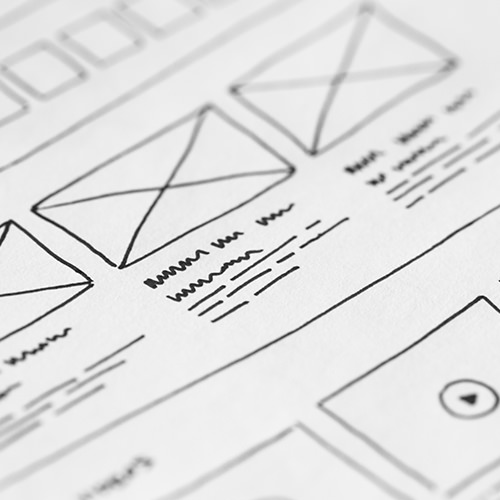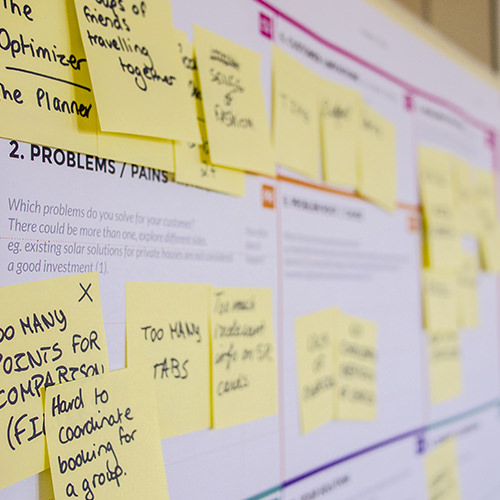Everyone Thinks They’re A Designer. Because. Everyone Is a Designer - Jared M. Spool
Every now and then, the community of designers brings up a couple of questions regarding the role of design and who is exactly responsible for it. What exactly is a designer? Who is qualified to practice design?
One view, which I happen to largely agree with, is that every person involved in the creation and shaping of a thing is a designer. As captured in the quote above from Jared Spool, it’s possible to have an expansive definition of the designer, one where we acknowledge that the role of design is executed by anyone involved in the making of an thing, and where the agency to design is democratic and universal. But this belief comes with some nuance. In particular, it raises some concerns for those who see themselves as professional designers, who take on the formal role of The Designer. “If everyone is a designer,” they ask, “then what is my part? What is the value of the specialist capabilities that I possess to making? What role do I play in the larger process if what I bring is supposedly universal?” This is not merely an abstract question of identity. It matters for how we approach resolving our needs by making things. When we put together collaborative groups, understanding the role of the members and their interactions is key. Knowing where The Designer fits and how everyone in the group participates in the design process gives us tools that make it more likely we can make what we need.
There’s also the question of whether design, as an aspect of making, is unique amongst disciplines. There are so many areas of specialty. Is everyone an engineer, an architect, a machinist, a writer, a painter? Are we kidding ourselves that design is widely accessible as an activity?
As a someone who thinks of himself as a contributor to design, but not a Designer, I’ve spent some time trying to square this circle. For me, the answer starts with an essential question: why do we make things at all?
Why we make
The making of things is fundamental to human experience. It is baked into what we are, written into our genes and evident in our bodies and minds. We have evolved brains that conceive, hands that shape, language and culture to share and collaborate. We have captured and compiled knowledge for millennia and built a culture that has elevated us go from shaping whatever we found around us to creating complex devices and systems, involving global resources and millions of people, to meet our needs. Making is the basis for our success as a species.
The driver for making things is intent to resolve a need. Sometimes the need is material and the things we make are solutions, devices that directly address a challenge and ease or remove them from our path. At other times, the need is more abstract, less direct, perhaps more conceptual, and there we make things that explore or express. Almost all human beings will, at some point in their lives, encounter a situation when they will grapple directly with a need and will find that things they have at hand are lacking, and that resolution will require the making of a thing. Sometimes the form of resolution exists, a pattern is known and applicable and that person can craft a thing from the resources they have. Sometimes, the need is one that has never been resolved and requires a wholly new thing to be made. In all of these cases, there are four things that will happen:
- A need is identified and acknowledged
- A thing is suggested to resolve the need
- The thing is applied to the need
- The result is evaluated
Because I want to refer back to it later, I am going call this The List. I think it is fundamental to keep the elements of The List in mind when we explore making things and the role design plays.
Depending on the results of the last step on The List, there are options for where we go next. Maybe we reach a satisfactory resolution and declare “problem solved!” Or perhaps the thing we applied to the need underperforms or fails completely, and we need to look for another thing that might do the job. Or maybe we reevaluate the need, figure out we cannot resolve it with our current resources, and just live with the consequences until something changes so that we can try to resolve the need again.
After we have come up against more than a couple of needs we usually start to look for a method of improving how we move through The List. The act of addressing needs give rise to a new set of needs. The meta-problem of the method spawns many questions. Can we get better at understanding the need up front? Can we improve how we narrow down the set of possible resolutions? Can we improve the chances that the thing will do the job? Can we get through The List faster or cheaper? And whose job is it to address the methodology we will use?
The place of design and the role of The Designer.
If making is fundamental to human experience and nearly everyone goes through the process of making things to resolve needs, then that process is going to be central to our lives. Depending upon the need, we have to call upon a range of skills, experiences, and capabilities to get through the List. For many needs, no single human being has all of the attributes to get the job done. To handle such complex needs, we look past individual ability and we turn to the most powerful human trait: cooperation.
We build teams, tribes of human beings focusing their collective abilities on a need, working together to reach a resolution. As individuals, we begin to concentrate our abilities, becoming specialists in some domains, going deep while the larger group remains broad. We set up mechanisms to cooperate between specialists, to keep the team cohesive and to maintain shared focus on the need.
Of the manifold elements that go into making, design may be the hardest one to pin down. Taken broadly, we can define design as the intentional practice of considering and shaping the form of a thing. When defined this way, we might say that design encompasses the whole of the thing, all of its constituent parts and features, how they are arranged and packaged, even how the thing is presented or used. Design is multidimensional, layered and broad. It can apply to everything about making. And that is the basis of the democratic principle of design. Almost everyone working on a thing plays some role in its design at some layer. Whether they are touching the surface aesthetics of the thing or influencing a deeply embedded component, their decisions result in the final form. They can all be said to have taken a design role.
If the role of design is so broad, so all encompassing, what is The Designer? Is this merely a made up role? I do not think so, and I think it comes down to a principle: The Designer exists to make sure that The List is always kept in mind and acted upon.
There’s a catch in our expansive view of design. It comes, in part from a difficult truth. Namely, we are often really, really bad at understanding and articulating our needs. Furthermore, it’s far easier to think about things, concrete solutions, than it is to think about the needs that drive them.
This has some consequences that will feel very familiar to almost anyone who has tried to make a thing in a group (or even alone). First, when we reach Step 2 of the list, the time when we must suggest a thing to resolve our need, we often begin to create something that is a very poor fit. In other words, we often build the wrong thing. Second, as specialists, we often narrow our view while increasing our passion for the area we know well, and we begin to see our speciality as the answer to every need. What we know is a hammer and every need becomes a nail. A related consequence is that we sometimes start at step 2 on the list, suggesting a thing to build, then trying to work back to step 1, finding a need. This is not always inappropriate, but most of the time, working backward in this way leads to poor results. The things made this way almost never make a good fit for a need, and they end up getting abandoned.
The Designer’s job is to help mitigate these issues. Yes, everyone involved has some responsibility in this area. But The Designer is specifically tasked with answering the step 1 question, “do we understand the need?” and the step 2 question “is the thing we are making a good fit for the need?”
The Designer operates at a holistic level, helping the other makers keep the purpose of the thing in mind. The holistic view requires a designer to engage with the thing at differing levels of abstraction, sometimes stepping back to see the whole frame, sometimes diving down to the tiniest details. Designers help bind other specialists together, while themselves holding a wide, general knowledge. Designers ask the “why” questions as often as the “how” questions.
But The Designer is not a superhero. It is not through the designers’ actions alone that an thing is designed. A designer recognizes that everyone involved has a role to play in the design. This includes not just the makers, but the consumers of the thing, those will will carry on with steps 3 and 4 of The List, since ultimately the success of the thing will be judged by its application as much as the process of its inception.
Design is a team sport.
Making things of any complexity requires cooperation and collaboration. Making is a team sport. Design, as an intentional and crucial part of making, is by extension a job for the team. Everyone has a part to play on the field. We are all players.
At the same time, it’s fair to say that we aren’t all playing the same position. Everyone can score a goal at some point, but sometimes we need to rely on a player with a particular set of skills. When the play calls for a holistic view, with a focus on the shaping the work to the problem, we call in The Designer.
Coming back to an earlier question, is design unique amongst the aspects of making things, in that is can be done by anyone? I think the answer is no. It’s possible for other disciplines involved in making to be applied by non-professionals. For example, writing is a common skill. Many people might write something that will ultimately become a final part of a thing. But not everyone is a writer. There’s still space for deep knowledge and specialization even when the rest of the group can contribute. The trick is this: for the professionals to recognize and encourage the contributions of everyone else, and for everyone else to understand when they’ve reached their depth, and it’s time for the pros to take over. It’s about recognizing that cooperation works best when there is enough overlap for the participants to understand each other, have have enough shared language that they can communicate effectively and bring all of their talents to bear.
In team sports, its possible to win with one standout player. But your odds go up a lot when the whole team can cover the field.
Some additional thoughts.
First, I want to say that I recognize that the word “design” is overloaded in our culture. And the people who call themselves designers may have a wide range of skills and techniques. There are a lot of flavors and subspecies of designer. I am going to avoid trying to identify what a “real” designer is beyond what I’ve already said. I think there are a lot of skills paths to becoming The Designer, but in all cases, you end up with the same thing: a person who can bind together the whole of a thing, and guide its shape at macro and micro levels, while keeping a eye on whether or not it meets the need in question.
Second, throughout this piece, I’ve used the terms “things” and “making”, but I haven’t really put much specificity into what they might mean. This is intentional, since I wanted to talk about design at a high level and across a spectrum. I’ll spend a second more to give some definition.
When I speak of things, I mean stuff that human beings create. This includes physical artifacts like machines, tools, art, food, et cetera. It also includes ephemeral and non-physical constructs, such as processes, methods, content…you get the picture. I tend to think of anything created through the deliberate action of one or more humans as things, in the most broad sense. Making is therefore the act of creating things.
None of this should be seen as particularly profound, but I wanted to bring it up, because it gets to something that I believe is important in both my private and public life. If design is the intentional act of considering and shaping the form of a thing, then design is applicable in almost everything we do. I think that matters, because putting design at the very center of human activity like that puts an importance on the practice. It means that everyone who makes things should have some notion of the moral, ethical, environmental, social, and economic impacts of the things they make. Since nearly every one of us will be faced with the challenges of design at some point, and the decisions we make may have profound impacts, it is incumbent upon us to place the education and application of design as a high priority. This is true for those Designers, fully dedicated to the role, as it is for all of the other makers of things. If everyone is a designer, we all have to take responsibility for the things we make.
Lastly, I want to thank Jared Spool, whose Tweet prompted me to write this whole thing. It was the process of trying and failing to come up with a short response that drove me to sit down this all out.
Now get out there, find a need and make a thing. Go be a designer.
This article was first published on February 25th, 2018 on Medium. You can read the original article by clicking here.



